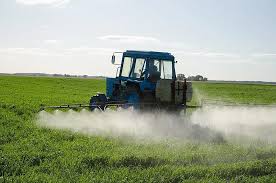This article explores various physical pest control methods used in agriculture, detailing their applications and significance in managing pest populations effectively.
Introduction to Physical Pest Control in Agriculture
Physical pest control involves trapping or killing pests such as insects and rodents. Historically, local people or paid rat-catchers caught and killed rodents using dogs and traps. On a domestic scale, sticky flypapers are used to trap flies.
In larger buildings, insects may be trapped using pheromones, synthetic volatile chemicals, or ultraviolet light to attract them, with some traps featuring a sticky base or electrically charged grid to kill them.
Glueboards are sometimes used for monitoring cockroaches and catching rodents. Rodents can be killed by suitably baited spring traps or caught in cage traps for relocation. Talcum powder or “tracking powder” can establish rodent routes inside buildings, and acoustic devices detect beetles in structural timbers.
Read Also: Small Ruminants: Sheep and Goats Classification
Physical Pest Control Methods in Agricultural Settings

Historically, firearms, such as “Garden Guns,” smooth-bore shotguns firing .22 caliber snake shot or 9mm Flobert, have been primary pest control tools. Commonly used by gardeners and farmers for snakes, rodents, birds, and other pests, these short-range weapons cause minimal harm beyond 15 to 20 yards and are quiet when fired with snake shot compared to standard ammunition.
They are effective in barns and sheds, as snake shot avoids damaging roofs or walls or injuring livestock with ricochet. They are also used at airports, warehouses, and stockyards.
The most common shot cartridge is .22 Long Rifle loaded with #12 shot, producing an 8-inch (20 cm) pattern at 10 ft (3.0 m), the maximum effective range. Special smoothbore shotguns, like the Marlin Model 25MG, produce effective patterns out to 15 or 20 yards using .22 WMR shotshells containing 1/8 oz. of #12 shot in a plastic capsule.
Poisoned Bait in Agricultural Pest Management
Poisoned bait is a common method for controlling rats, mice, birds, slugs, snails, ants, cockroaches, and other pests. Formulations contain a food attractant for the target species and a suitable poison.
For ants, slow-acting toxins allow workers to carry the substance back to the colony; for flies, quick-acting substances prevent egg-laying and nuisance. Baits for slugs and snails often contain metaldehyde, dangerous to children and pets.
Warfarin, traditionally used for rodents, faces resistance in many populations, leading to difenacoum substitution. These cumulative poisons require regular bait station refills.
Poisoned meat has been used for centuries to kill wolves and birds of prey, but poisoned carcasses kill non-target carrion feeders, nearly wiping out raptors in Israel during intense rat poisoning campaigns.
Read Also: Complete Guide on Sheep and Goats Production
Fumigation for Agricultural Structures

Fumigation treats structures to kill pests like wood-boring beetles by sealing or tenting them and fogging with liquid insecticide for 24–72 hours. Costly and inconvenient, as structures cannot be used during treatment, it targets all pest life stages.
Space treatment, an alternative, disperses liquid insecticide in the atmosphere without evacuation or sealing, allowing most building activities to continue but with reduced penetration. Contact insecticides minimize long-lasting residual effects.
Sterilization Techniques in Agricultural Pest Control
Populations of pest insects can be dramatically reduced by releasing sterile individuals, involving mass rearing, sterilization via X-rays or other means, and release into wild populations.
This is effective where females mate once and insects do not disperse widely, as seen with the New World screw-worm fly, tsetse fly, tropical fruit flies, pink bollworm, and codling moth.
Laboratory studies with U-5897 (3-chloro-1,2-propanediol) for rat control in the 1970s were unsuccessful, but 2013 New York City sterilization traps reduced rat populations by 43%. ContraPest, approved by the EPA in August 2016, supports rodent sterilization.
Insulation-Based Pest Control in Agricultural Buildings
Boron, a known pesticide, can be impregnated into cellulose insulation fibers at specific levels to mechanically kill self-grooming insects like ants, cockroaches, and termites. Adding insulation to attics and walls controls common pests while providing thermal and acoustic benefits.
The EPA regulates this general-use pesticide in the United States, requiring licensed pest management professionals to install it as part of integrated pest management.
Simply adding Boron or EPA-registered pesticides to insulation does not qualify it as a pesticide; dosage and application must be carefully controlled and monitored.
Populations of pest insects can be dramatically reduced by releasing sterile individuals, involving mass rearing, sterilization via X-rays or other means, and release into wild populations. This is particularly effective where females mate once and insects do not disperse widely.
Do you have any questions, suggestions, or contributions? If so, please feel free to use the comment box below to share your thoughts. We also encourage you to kindly share this information with others who might benefit from it. Since we can’t reach everyone at once, we truly appreciate your help in spreading the word. Thank you so much for your support and for sharing!

